[ad_1]
What number of fewer energy do it’s important to eat each day to lose one pound of physique fats?
The primary surgical try at physique sculpting was in 1921 on a dancer “who wished to enhance the form of her ankles and knees.” The surgeon apparently scraped away an excessive amount of tissue and tied the stitches too tight, leading to necrosis, amputation, and the primary recorded malpractice swimsuit within the historical past of cosmetic surgery. Liposuction is way safer right this moment, killing solely about 1 in 5,000 sufferers, principally from unknown causes, corresponding to throwing a clot into your lung or perforating your inside organs. You may see a “Explanation for Demise” chart beneath and at 0:37 in my video The three,500 Calorie per Pound Rule Is Unsuitable.
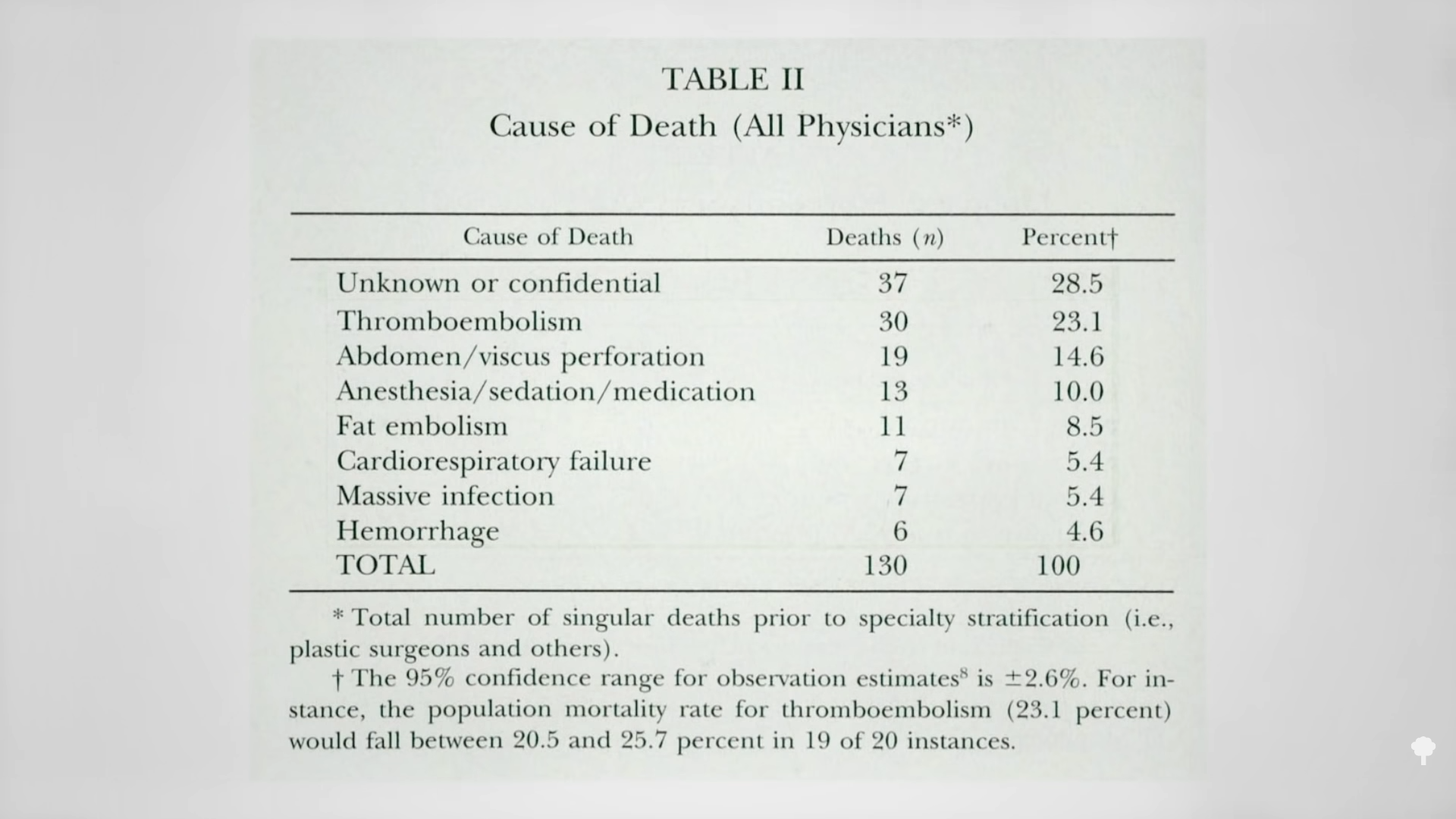
Liposuction at present reigns as the preferred beauty surgical procedure on this planet, and its results are certainly solely beauty. A research revealed within the New England Journal of Medication assessed overweight ladies earlier than and after having about 20 kilos of fats sucked out of their our bodies, leading to an almost 20 % drop of their whole physique fats. Usually, when you lose even simply 5 to 10 % of your physique weight in fats, you get important enhancements in blood stress, blood sugars, irritation, ldl cholesterol, and triglycerides. However liposuction sucks. None of these advantages materialized even after large liposuction, which means that the issue shouldn’t be subcutaneous fats, the fats beneath our pores and skin. The metabolic insults of weight problems come up from the visceral fats, the fats surrounding and even infiltrating our inside organs, just like the fats marbling our muscular tissues and liver. The way in which you lose that fats, the damaging fats, is to soak up fewer energy than you burn.
Anybody who’s seen The Greatest Loser tv packages is aware of that with sufficient caloric restriction and train, a whole bunch of kilos will be misplaced. Equally, there are circumstances within the medical literature of what some consult with as “tremendous weight problems.” In a single case, a person misplaced an enormous quantity of weight “largely with out skilled assist and with out surgical procedure” and saved it off for years. He dropped 374 kilos, shedding about 20 kilos a month by biking two hours a day and decreasing his each day consumption to 800 energy, which is down round what some prisoners bought at focus camps in World Struggle II.
Maybe “America’s most celebrated weight reduction” seen on tv was Oprah’s. She pulled out a wagon stuffed with fats, representing the 67 kilos she had misplaced on a very-low-calorie weight loss plan. What number of energy did she have to chop to realize that weight reduction inside 4 months? When you seek the advice of with main diet textbooks or consult with trusted authorities just like the Mayo Clinic, you’ll be taught the straightforward weight reduction rule: 1 pound of fats equals 3,500 energy. Quoting from the Journal of the American Medical Affiliation, “A complete of 3500 energy equals 1 pound of physique weight. This implies when you lower (or enhance) your consumption by 500 energy each day, you’ll lose (or achieve) 1 pound per week. (500 energy per day × 7 days = 3500 energy.)”
It’s the straightforward weight-loss rule that’s merely not true.
The three,500-calorie rule will be traced again to a paper revealed in 1958. The creator famous that since fatty tissue within the human physique is 87 % fats, a pound of physique fats would have about 395 grams of pure fats. Multiplying that by 9 energy per gram of fats provides you that “3,500 energy per pound” approximation. The deadly flaw that results in “dramatically exaggerated” weight-loss predictions is that the three,500-calorie rule fails to keep in mind the truth that modifications within the Energy-In facet of the energy-balance equation robotically result in modifications within the Energy-Out facet—for instance, metabolic adaption, the slowing of metabolic charge that accompanies weight reduction. That’s one purpose weight reduction plateaus.
Think about a sedentary, 30-year-old lady of common top who weighs 150 kilos. In line with the three,500-calorie rule, if she cuts 500 energy out of her each day weight loss plan, she’d lose a pound every week or 52 kilos a yr. In three years, she would vanish. She’d go from 150 kilos to -6. Clearly, that doesn’t occur. As a substitute, as you may see within the graph beneath and at 4:33 in my video, within the first yr, she’d seemingly lose 32 kilos, not 52. Then, after a complete of three years, she’d most likely stabilize at about 100 kilos. It is because it takes fewer energy to exist as a skinny individual.
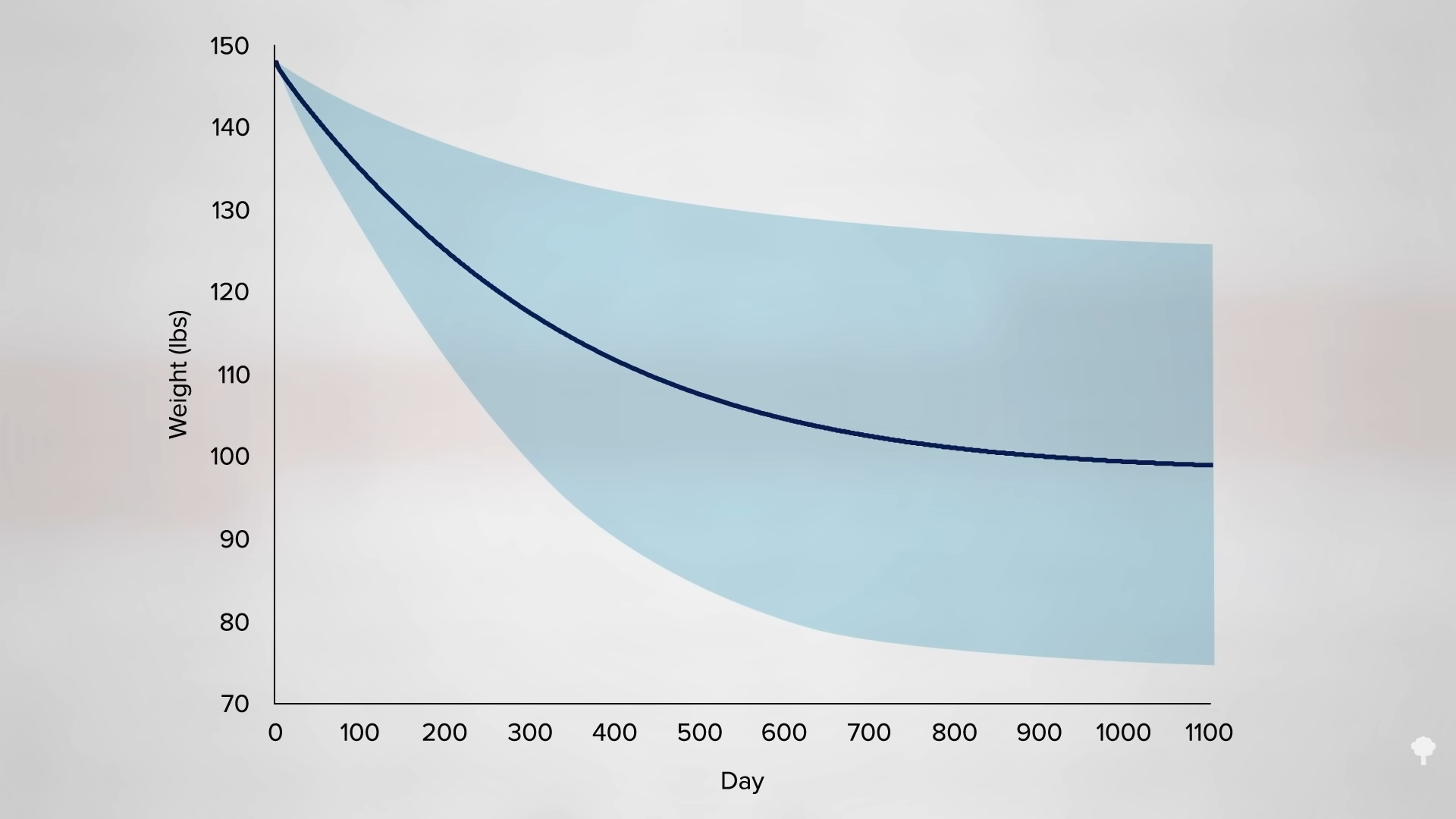
A part of it’s “easy mechanics”: Extra power is required to maneuver a heavier mass, in the identical method a Hummer requires extra gas than a compact automotive. Suppose how rather more effort it might take to simply rise up from a chair, stroll throughout the room, or climb a number of stairs when you had been carrying a 50-pound backpack. Even while you’re at relaxation, sleeping, there’s merely much less of your physique to keep up as you drop some pounds. Each pound of fats tissue misplaced could imply one much less mile of blood vessels by which your physique has to pump blood each minute. So, the fundamental repairs and motion of thinner our bodies take fewer energy. As you drop some pounds by consuming much less, you find yourself needing much less. That’s what the three,500-calorie rule doesn’t keep in mind.
Think about it one other method: A 200-pound man begins consuming 500 extra energy a day, possibly by consuming a big soda or consuming two donuts. In line with the three,500-calorie rule, in ten years, he’d weigh greater than 700 kilos. That doesn’t occur as a result of, the heavier he’s, the extra energy he burns simply by current. When you’re 100 kilos chubby, it’s as if there’s a thin individual inside you attempting to stroll round balancing 13 gallons of oil or lugging round a sack full of 400 sticks of butter. As you may see within the graph beneath and at 6:13 in my video, it takes about two donuts’ price of additional power simply to stay at 250 kilos, in order that’s the place you’d plateau when you saved it up. Given a sure calorie extra or deficit, weight achieve or weight reduction is a curve that flattens out over time, quite than a straight line up or down.
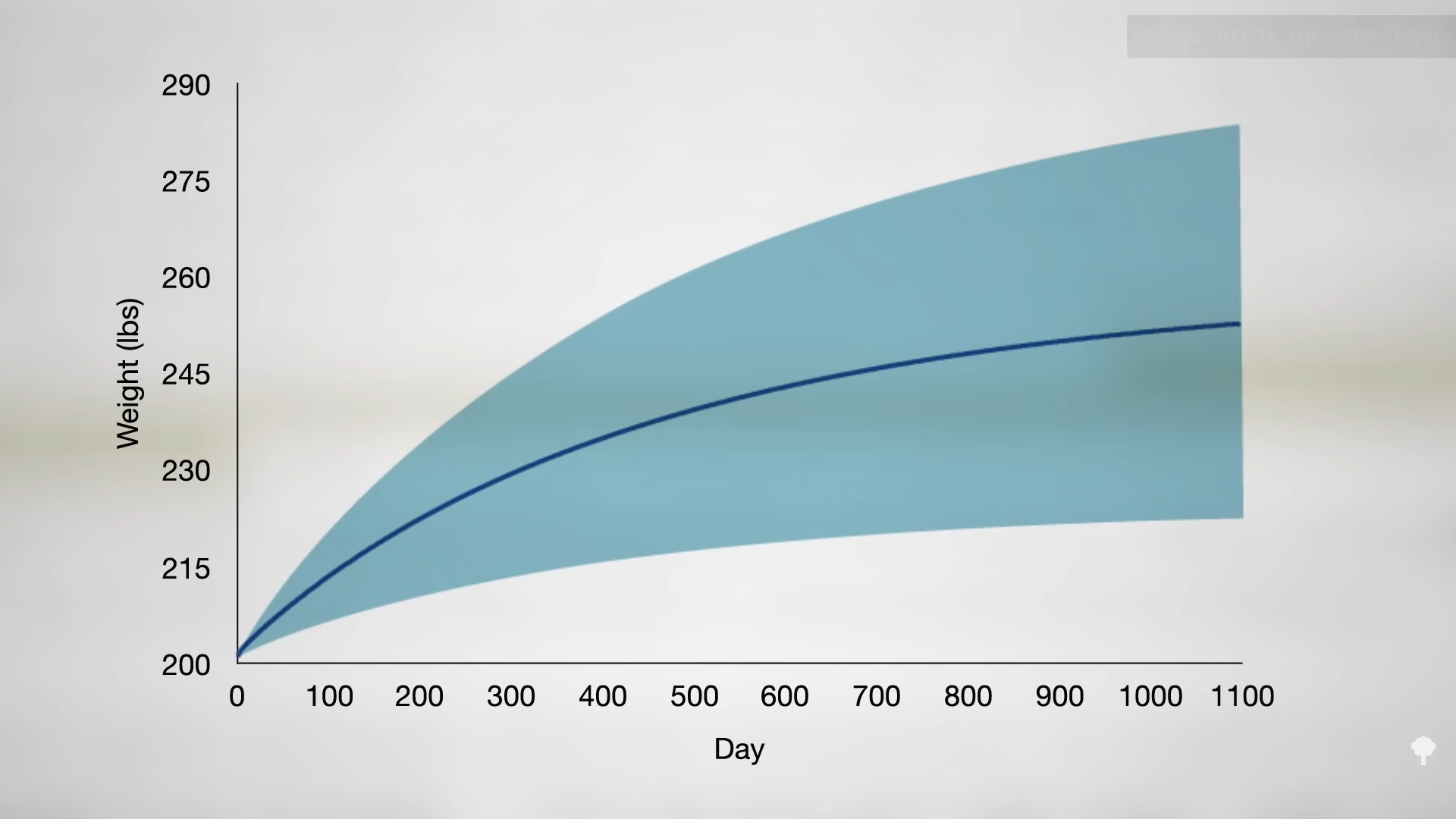
However, the three,500-calorie rule continues to crop up, even in weight problems journals. Public well being researchers used it to calculate what number of kilos youngsters may lose yearly if, for instance, fast-food children’ meals swapped in apple slices for french fries. You may see the “Counting Energy in Youngsters’ Meals” graphic beneath and at 6:39 in my video.
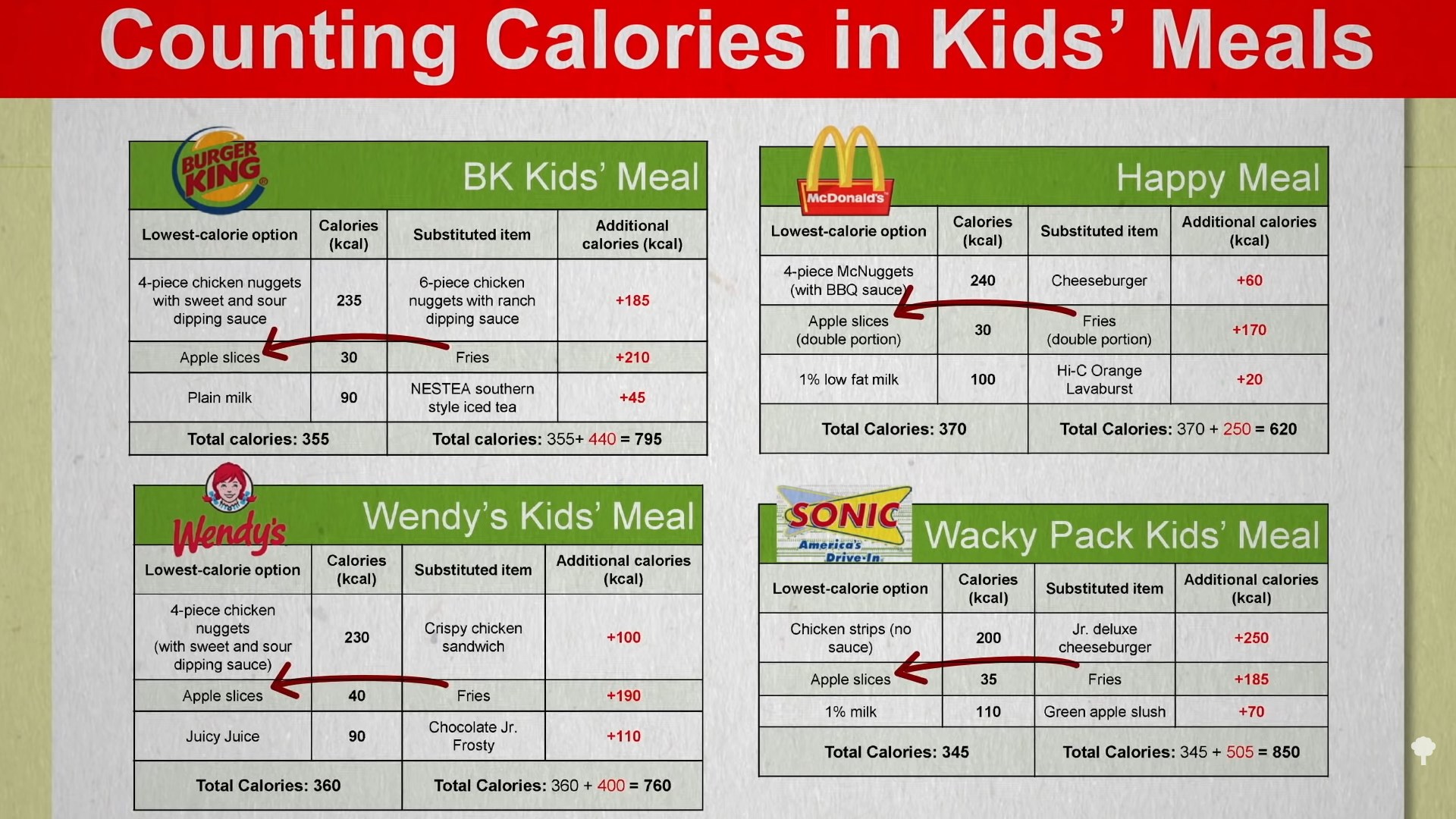
They figured that two meals every week may add as much as about 4 kilos a yr. The precise distinction, Nationwide Restaurant Affiliation–funded researchers had been little doubt delighted to level out, would most likely add lower than half a pound—ten occasions lower than the three,500-calorie rule would predict, as you may see beneath and at 7:06 in my video. That authentic article was subsequently retracted.
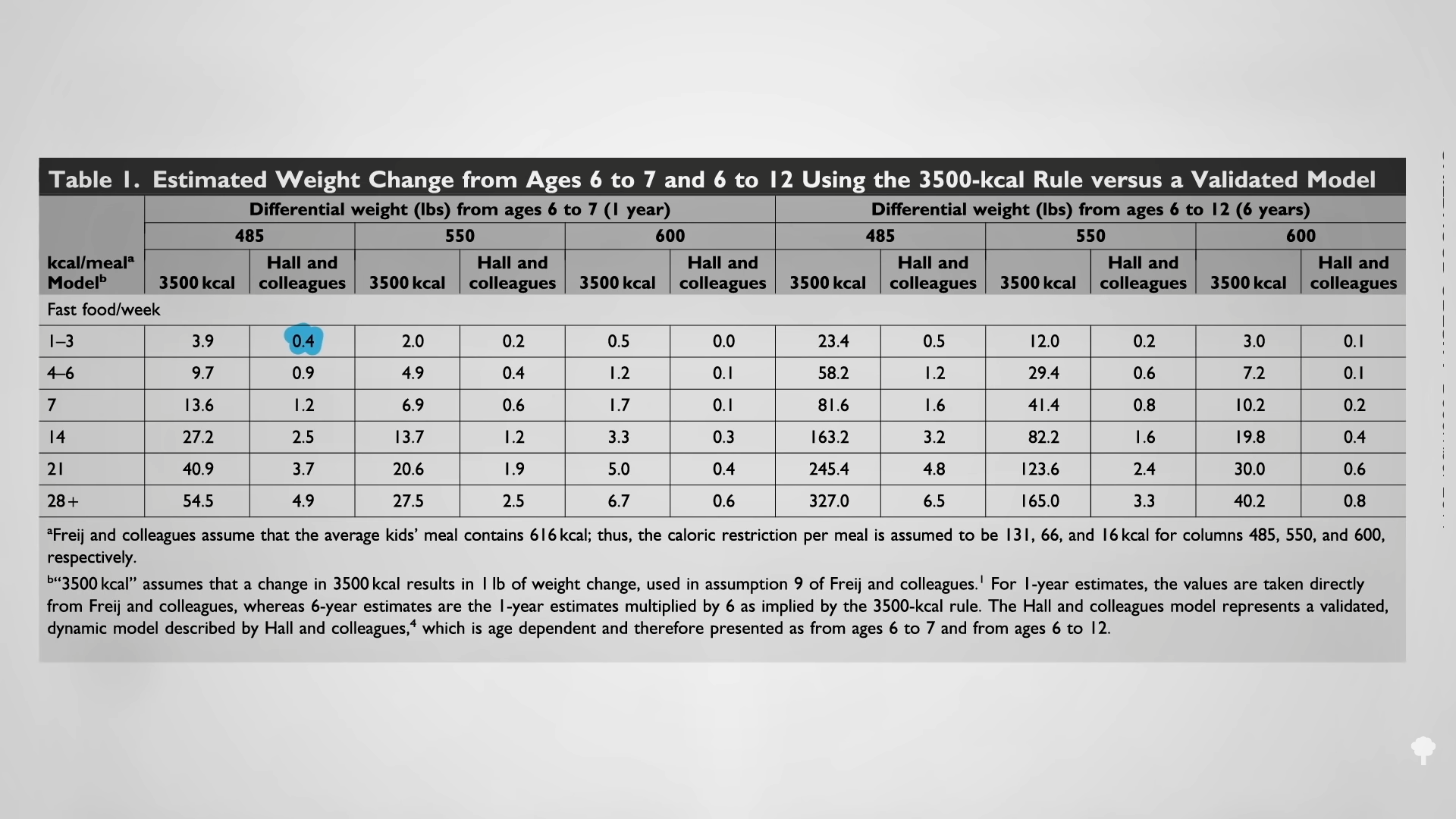
The three,500 Calorie per Pound Rule Is Unsuitable is the primary of 14 movies which can be a part of my fasting collection, about which I did two webinars. The movies are on NutritionFacts.org, or you will get all of them now in a digital obtain at Intermittent Fasting. You might also be all in favour of my webinars on Fasting and Illness Reversal and Fasting and Most cancers.
Different movies on this collection are included in associated movies beneath.
Take a look at another well-liked movies on weight reduction.
I additionally just lately tackled the ketogenic weight loss plan.
[ad_2]







































Discussion about this post